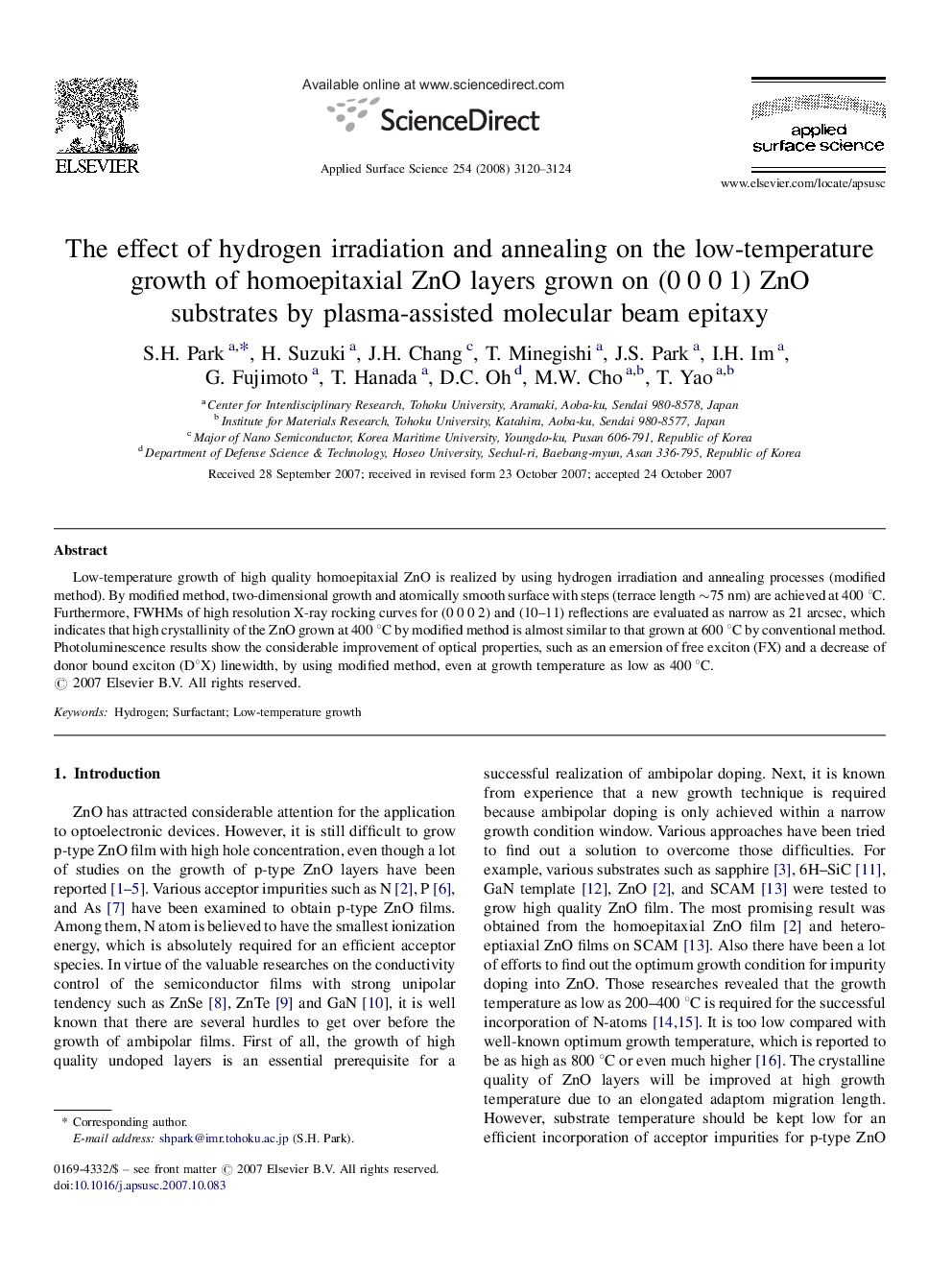| Article ID | Journal | Published Year | Pages | File Type |
|---|---|---|---|---|
| 5365350 | Applied Surface Science | 2008 | 5 Pages |
Low-temperature growth of high quality homoepitaxial ZnO is realized by using hydrogen irradiation and annealing processes (modified method). By modified method, two-dimensional growth and atomically smooth surface with steps (terrace length â¼75 nm) are achieved at 400 °C. Furthermore, FWHMs of high resolution X-ray rocking curves for (0 0 0 2) and (10-11) reflections are evaluated as narrow as 21 arcsec, which indicates that high crystallinity of the ZnO grown at 400 °C by modified method is almost similar to that grown at 600 °C by conventional method. Photoluminescence results show the considerable improvement of optical properties, such as an emersion of free exciton (FX) and a decrease of donor bound exciton (D°X) linewidth, by using modified method, even at growth temperature as low as 400 °C.
